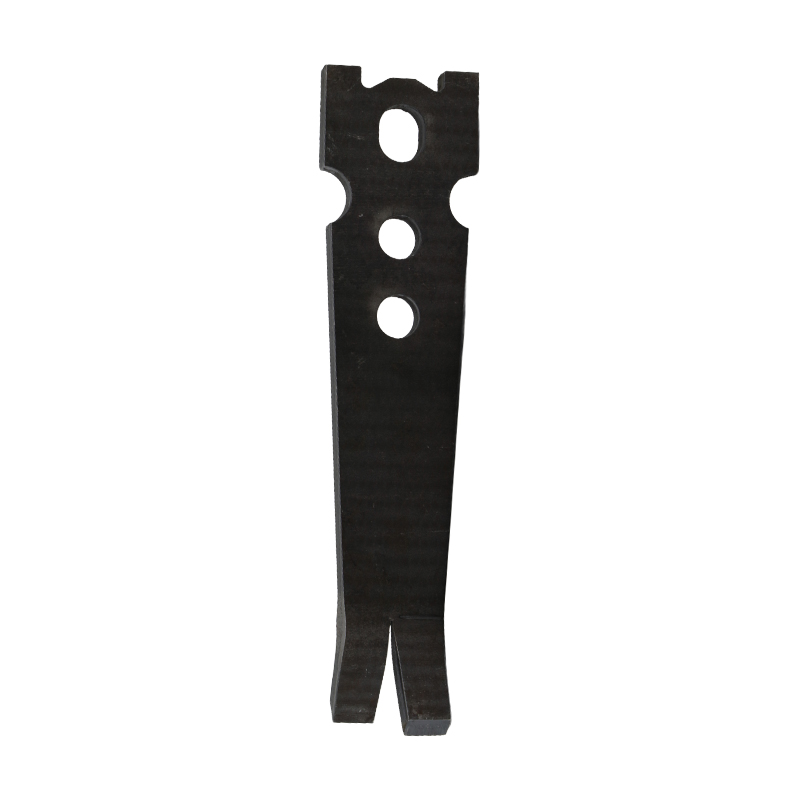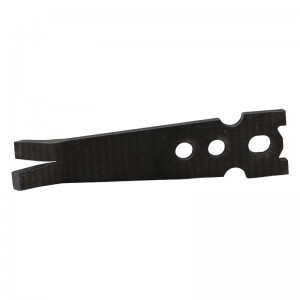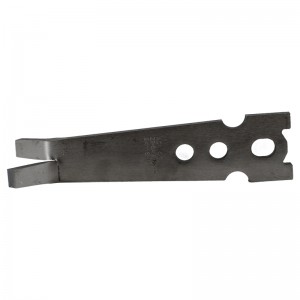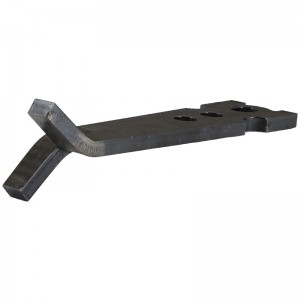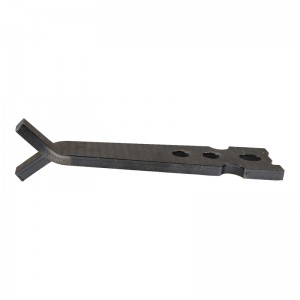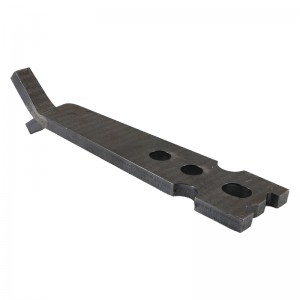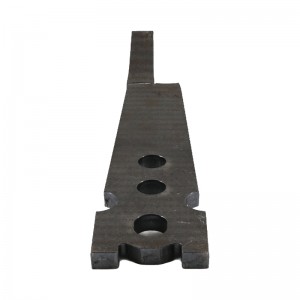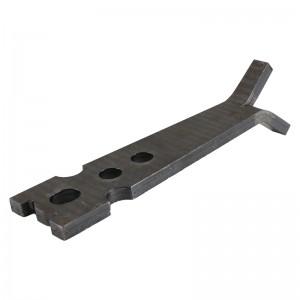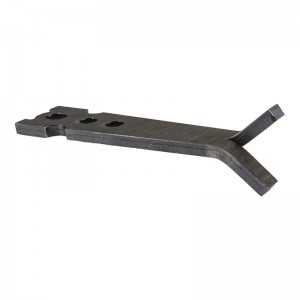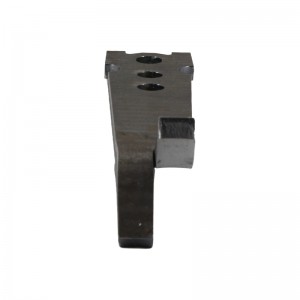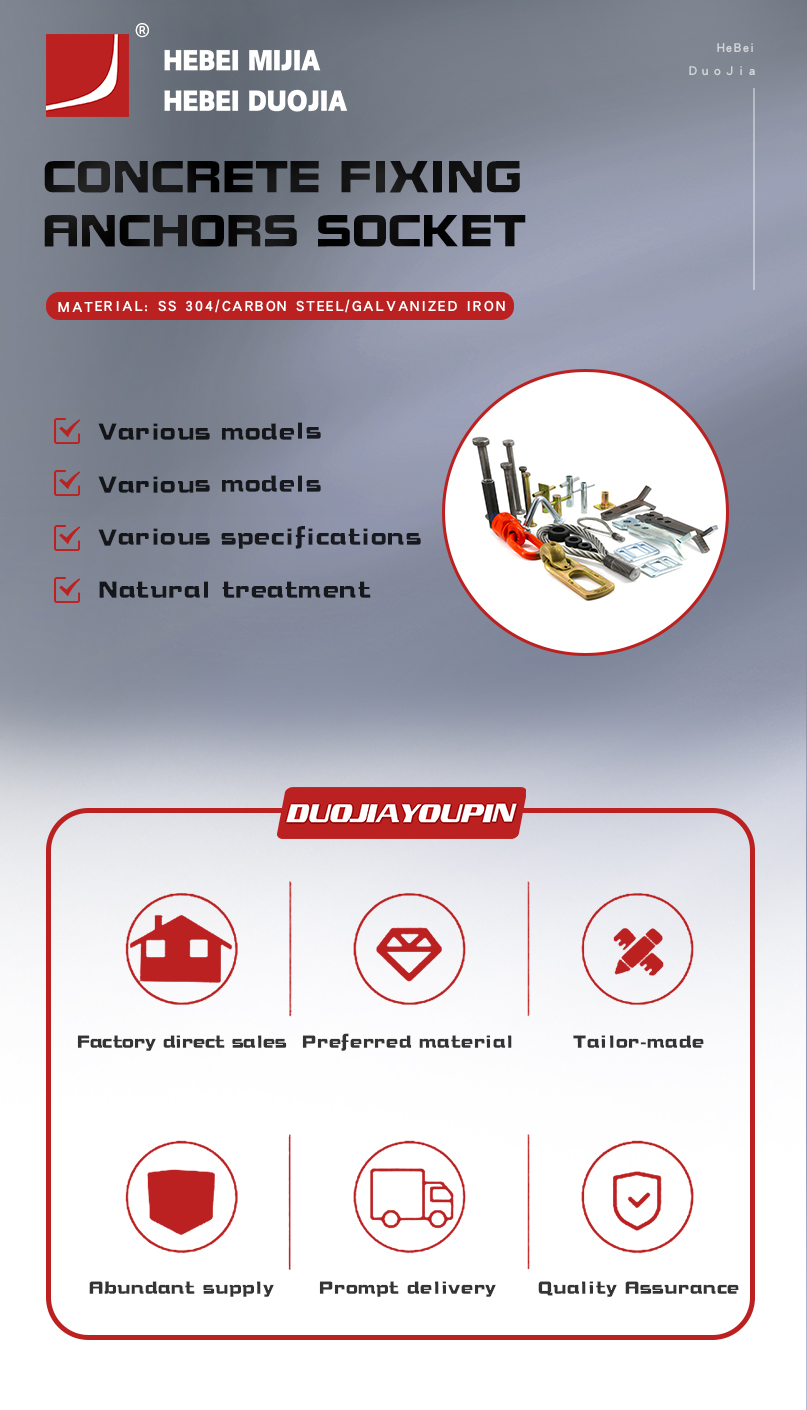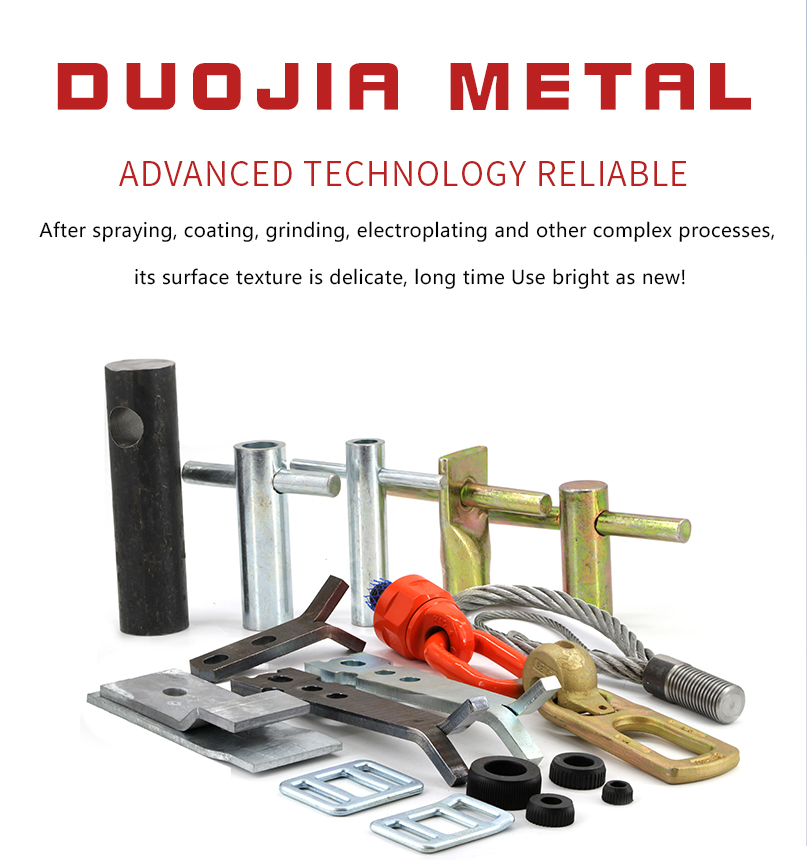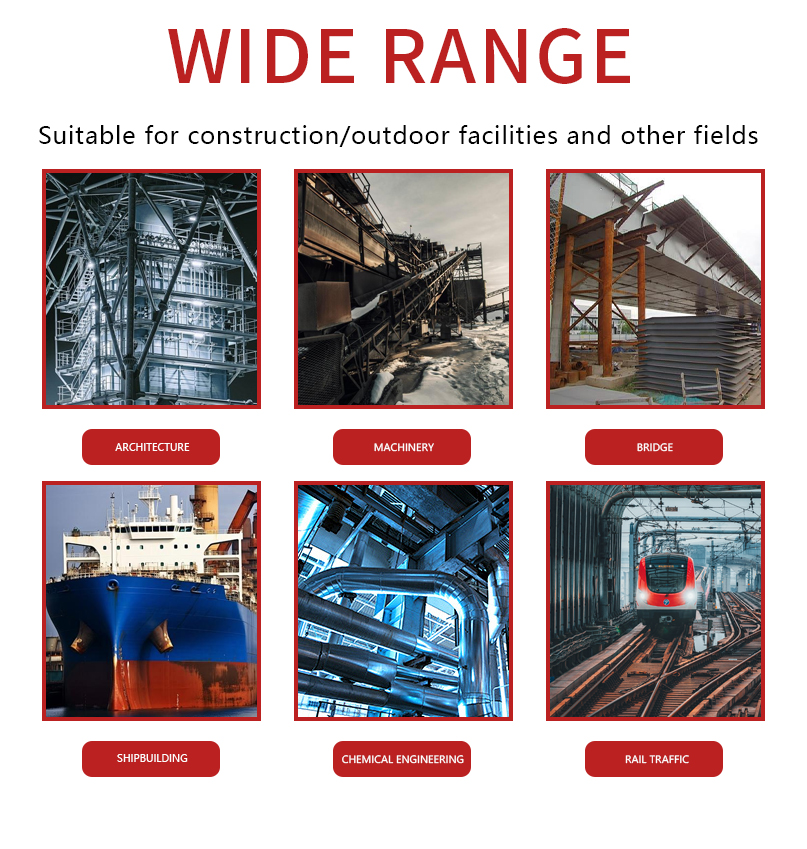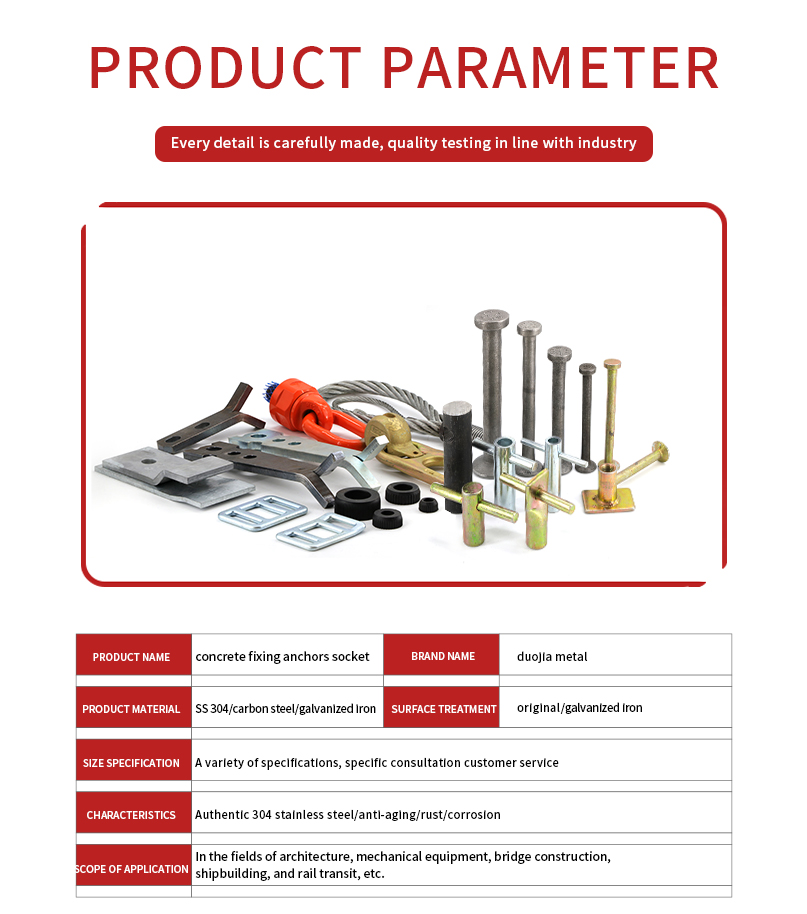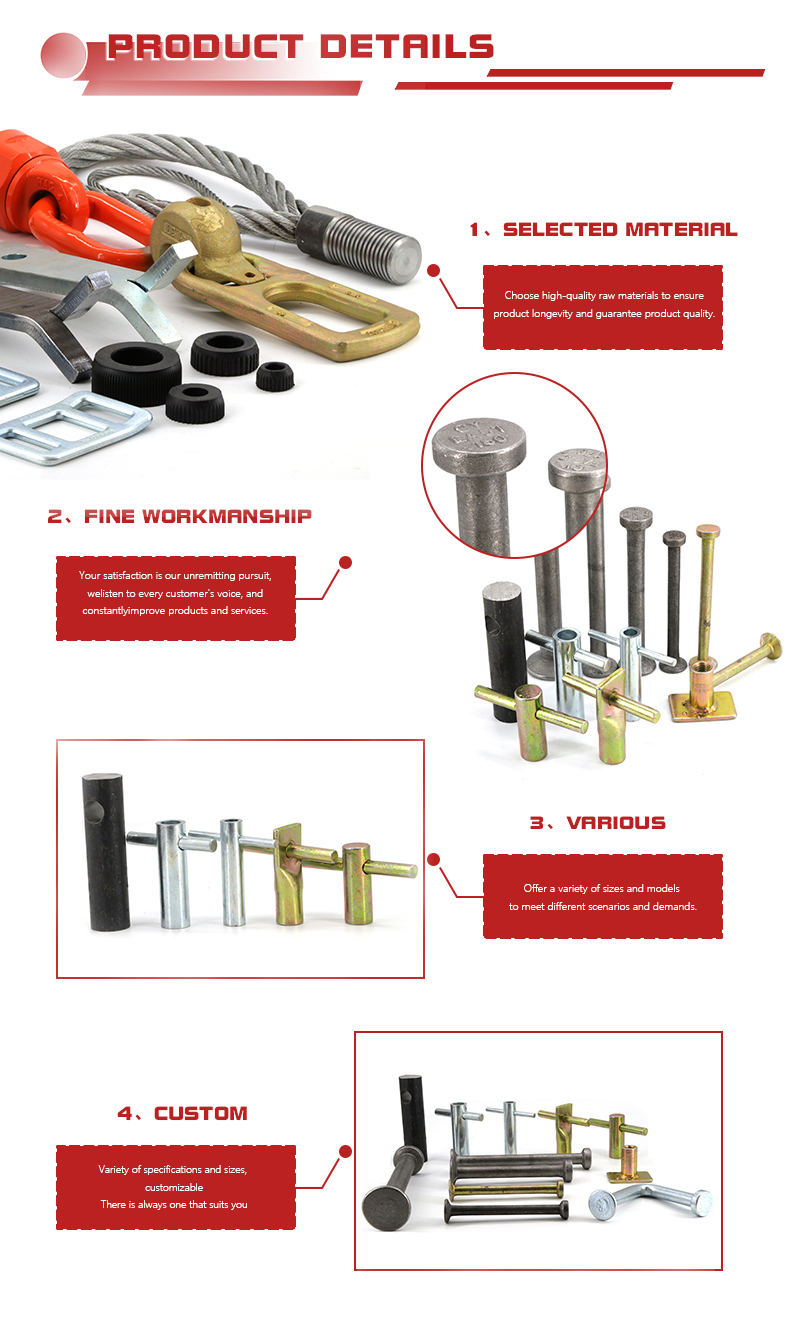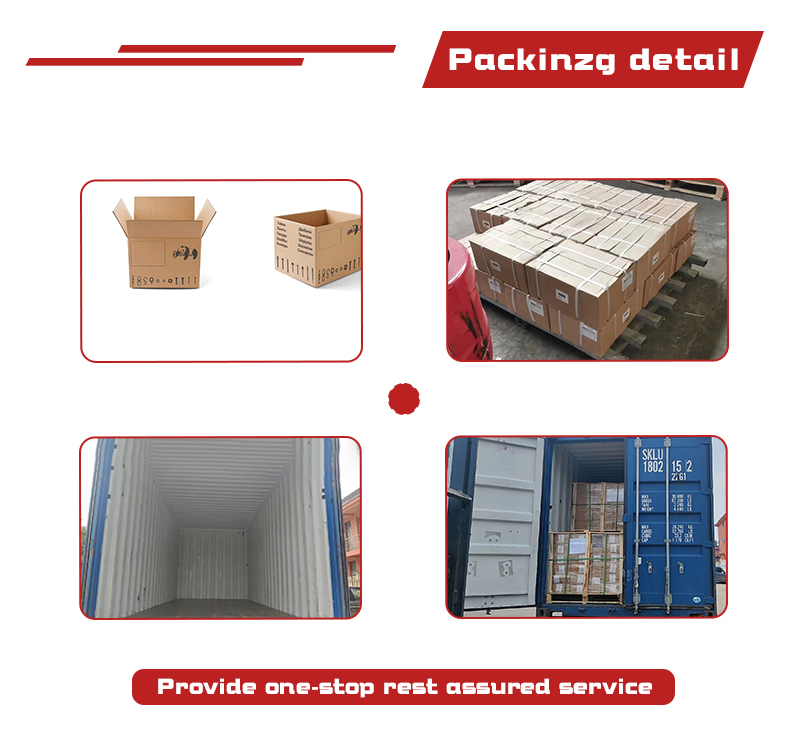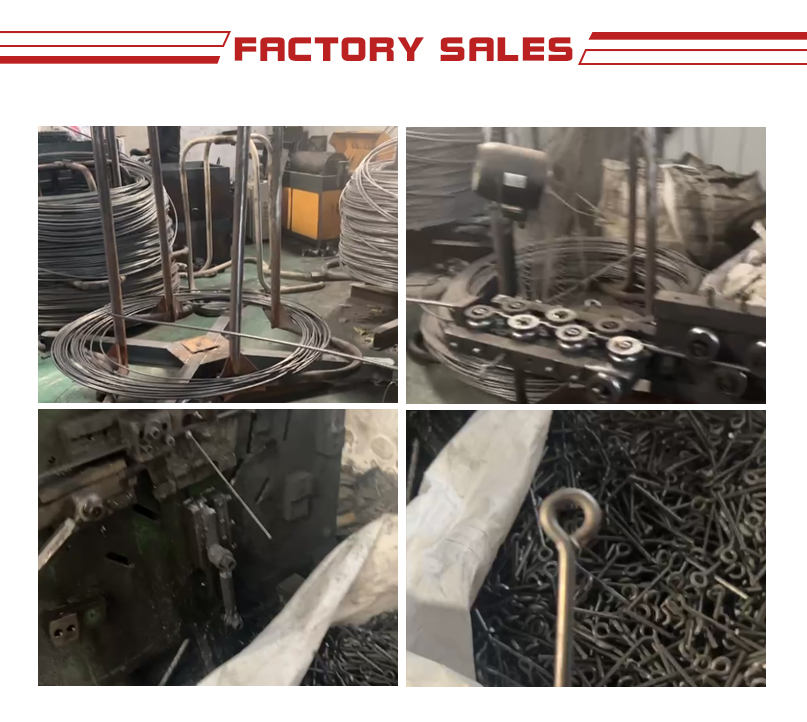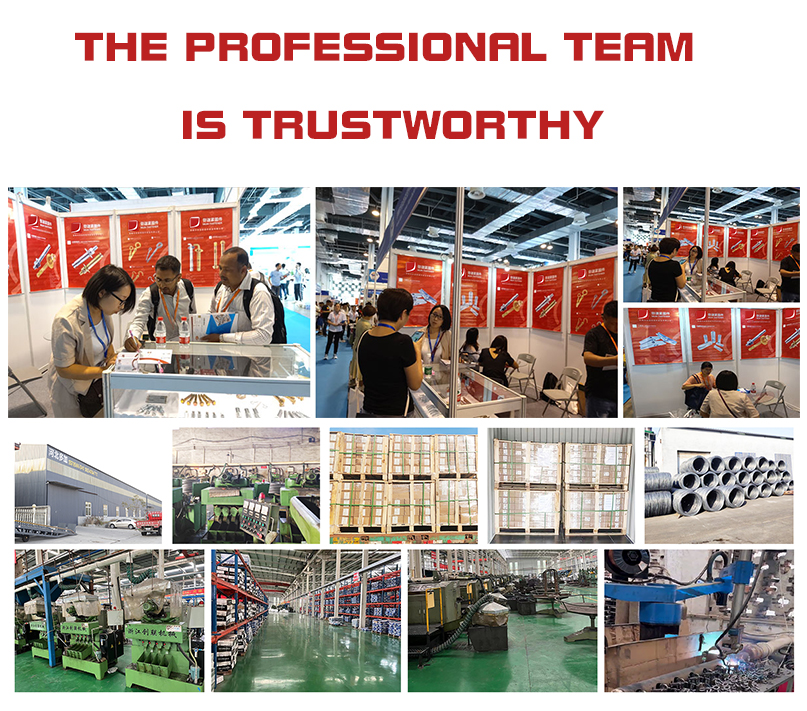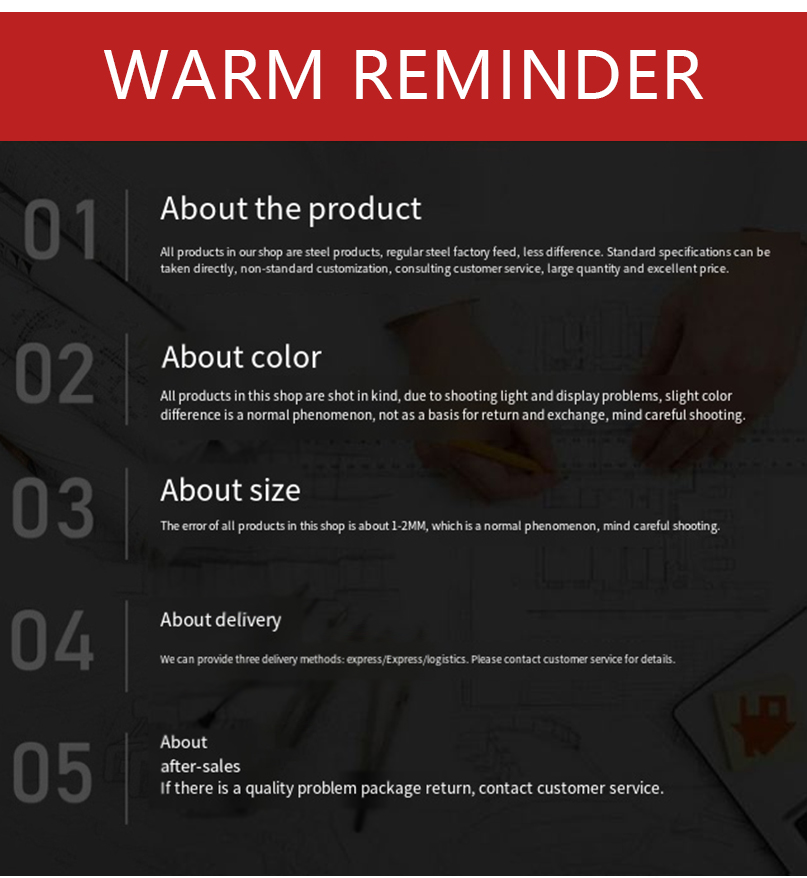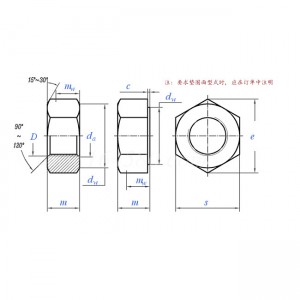✔️ Material:Carbon steel
✔️ Surface:Plain
✔️Head:Round
✔️Grade:4.8
Product introduce:
Precast concrete accessories are vital components in the precast concrete industry. They are used to enhance the functionality, stability, and connectivity of precast concrete elements. These accessories are typically made from materials like steel, plastic, or metal alloys, chosen for their strength, durability, and compatibility with concrete.
Common types include:
- Lifting Anchors: Such as spread anchors, which are used to lift precast concrete slabs. They need to be used with ring clutches. When lifting a concrete slab horizontally, they can be installed at the four corners of the slab or at the three corners of a congruent triangle that coincides with the center. For vertical lifting, they can be placed on both sides. These anchors typically have a safety factor exceeding 3 times and often come with relevant certifications like CE.
- Connection Inserts: Facilitate the connection between different precast concrete components or between precast elements and other structural parts. They ensure a secure and stable joint, enabling the transfer of loads.
- Rebar Supports and Spacers: Like rebar chairs and spacer wheels, these accessories maintain the correct position and spacing of reinforcing bars (rebars) within the precast concrete. This is crucial for ensuring the structural integrity of the concrete element, as it helps the rebars effectively reinforce the concrete and resist tensile forces.
- Formliners: Used to create specific textures, patterns, or finishes on the surface of precast concrete elements. They can enhance the aesthetic appeal of the final product, and are also useful in applications where a certain surface grip or appearance is required.
- Bar Supports and Rustication Strips: Bar supports hold rebars in place during concrete pouring, while rustication strips are used to create decorative or functional grooves and patterns on the precast concrete surface.
Usage Instructions
- Selection:
- Load Consideration: Determine the load requirements of the precast concrete structure. For example, if it’s a heavy – duty lifting application, choose lifting anchors with an appropriate working load limit. Refer to the manufacturer’s specifications for load – rating information.
- Compatibility: Ensure that the accessories are compatible with the precast concrete material and any other components they will interact with. For instance, the material of connection inserts should bond well with concrete and not cause any chemical reactions that could compromise the joint.
- Environmental Factors: Consider the environmental conditions where the precast concrete element will be used. In corrosive environments, select accessories with corrosion – resistant coatings or made from corrosion – resistant materials like stainless steel.
- Installation:
- Proper Positioning: For lifting anchors, install them in the correct locations as per the design requirements. Incorrect placement can lead to uneven loading and potential failure during lifting operations. Use templates or marking tools to ensure accurate positioning.
- Secure Attachment: When installing connection inserts, ensure they are firmly embedded in the precast concrete. This may involve using appropriate adhesives, mechanical fasteners, or proper casting techniques to make sure the inserts are properly anchored and can transfer loads effectively.
- For Rebar – Related Accessories: Position rebar supports and spacers accurately to maintain the correct cover and spacing of rebars. This is often critical for meeting building code requirements and ensuring the structural performance of the precast element.
- Inspection and Maintenance:
- Pre – installation Inspection: Before installation, carefully inspect the accessories for any signs of damage, such as cracks, deformations, or corrosion. Reject any defective items.
- Regular Checks: Periodically inspect the installed accessories during and after the construction process. Look for signs of wear, loosening, or damage. For example, check lifting anchors for any signs of fatigue or deformation after repeated use.
- Maintenance Actions: If any issues are detected, take appropriate maintenance actions. This could include tightening loose fasteners, replacing corroded parts, or applying additional protective coatings as needed.


